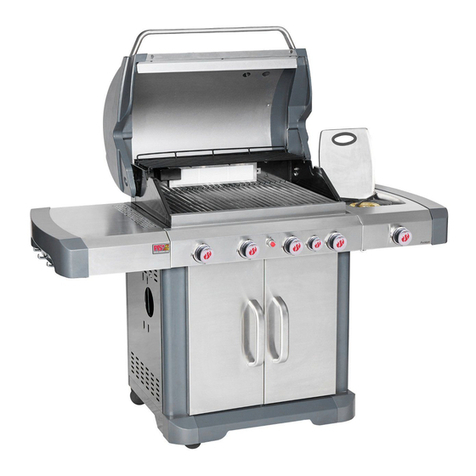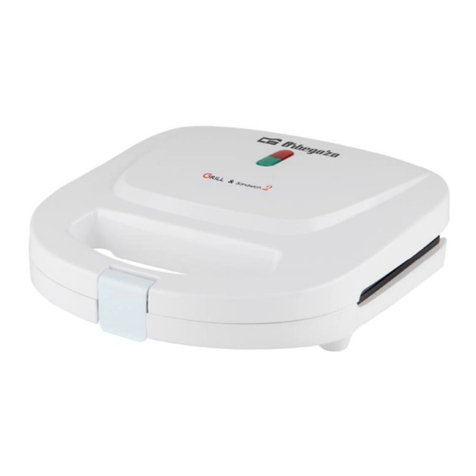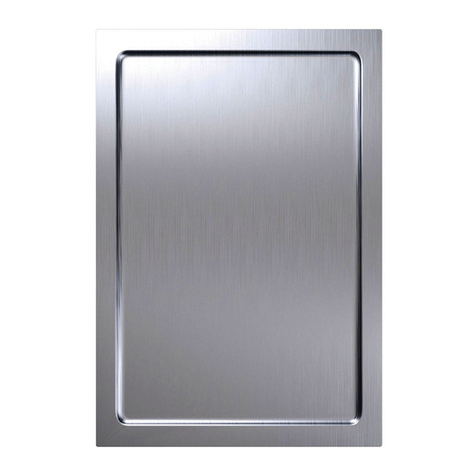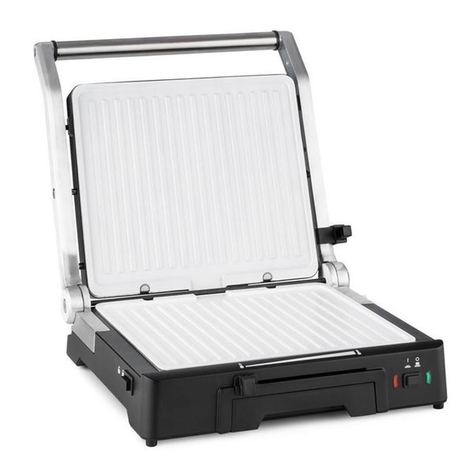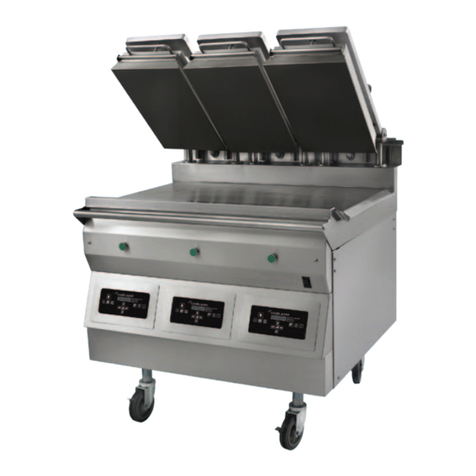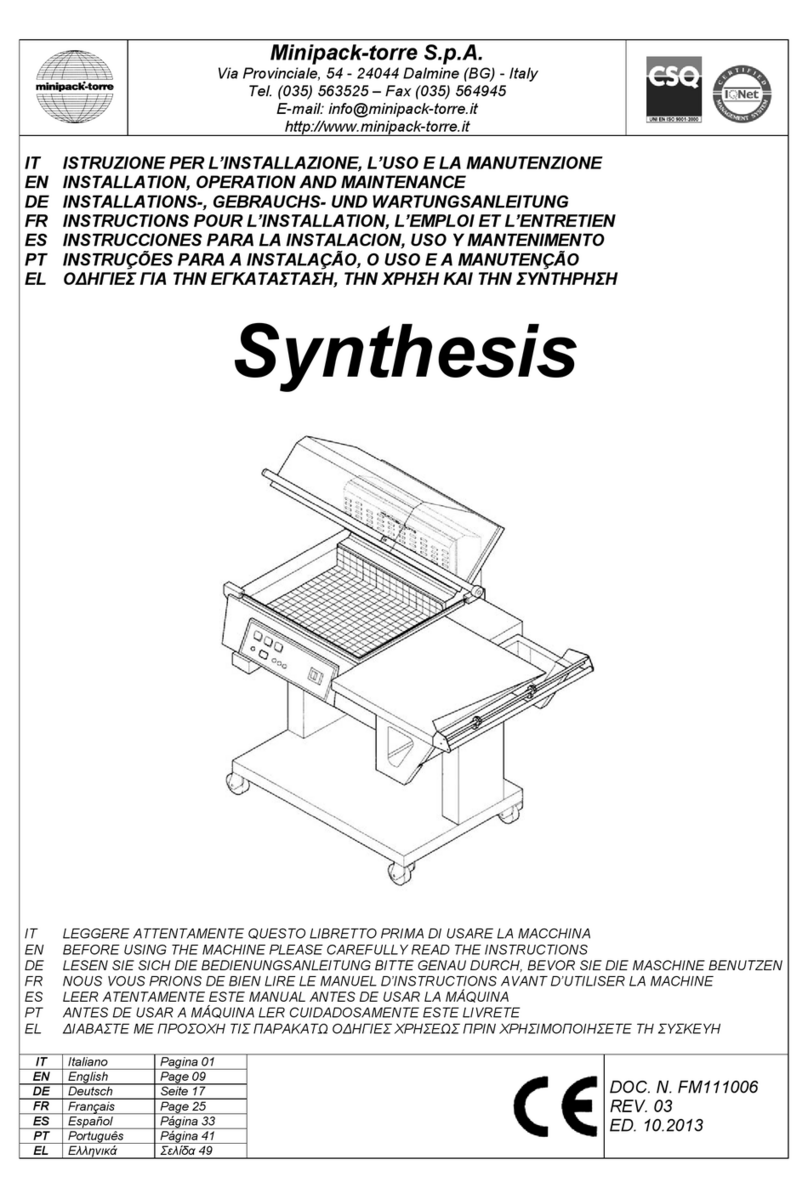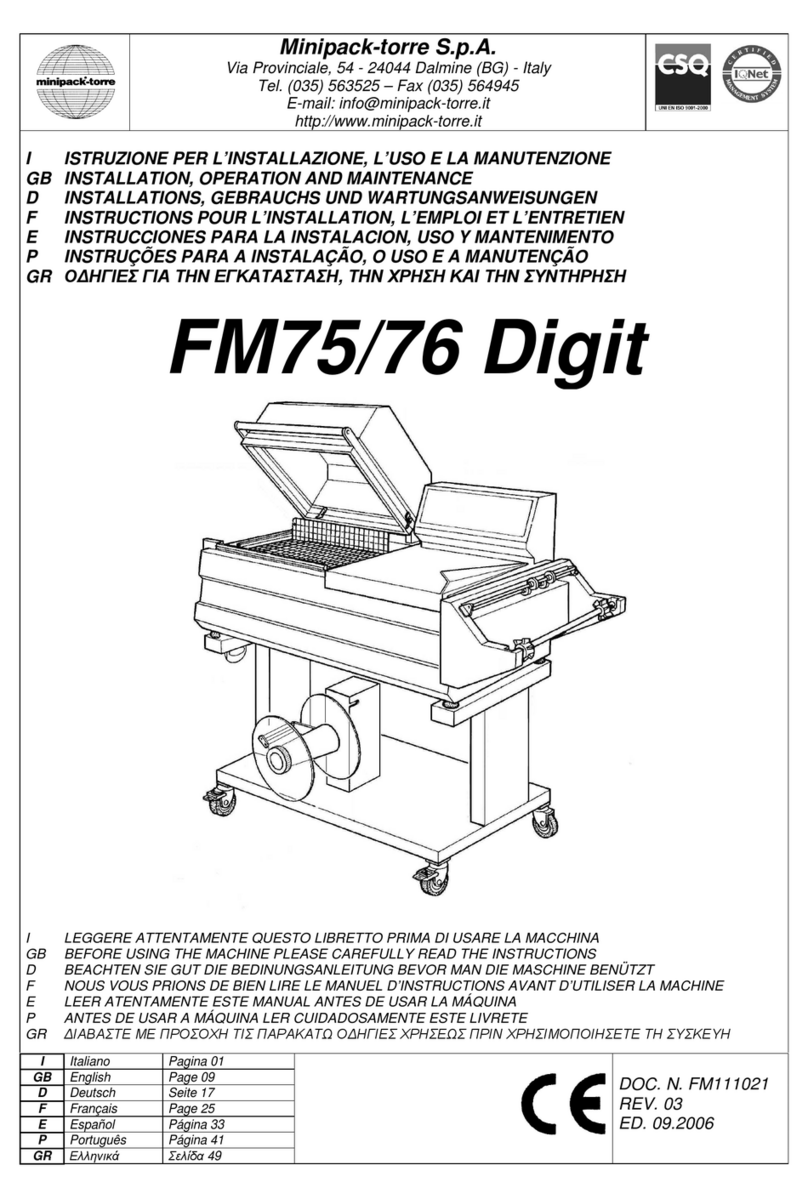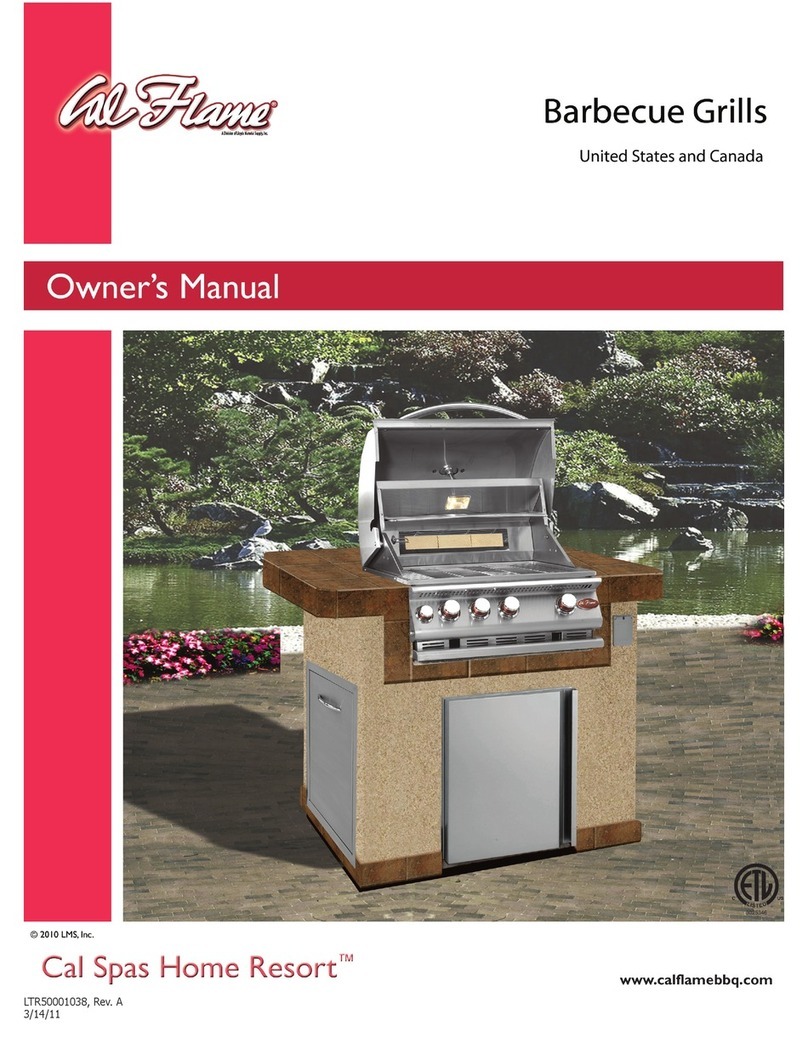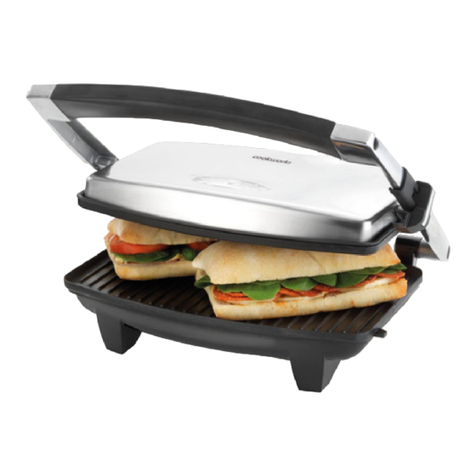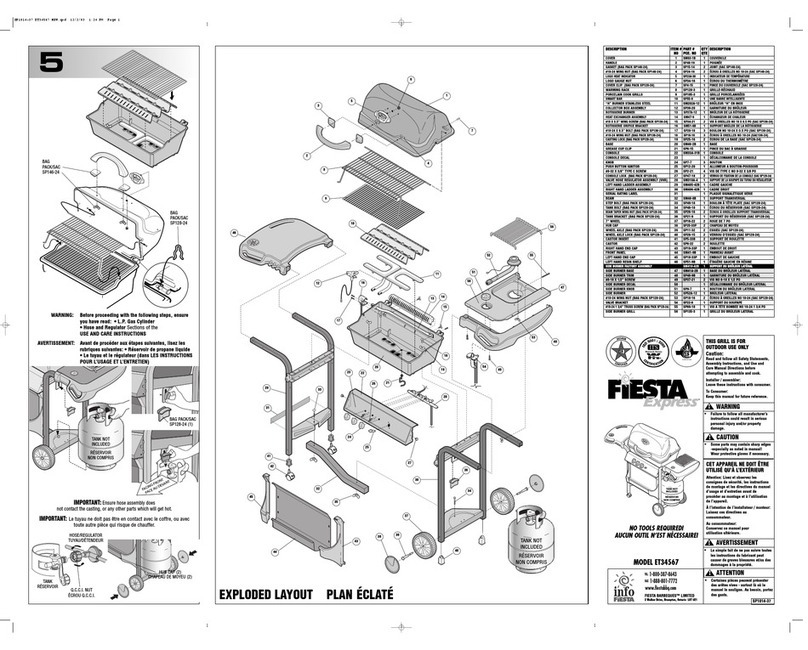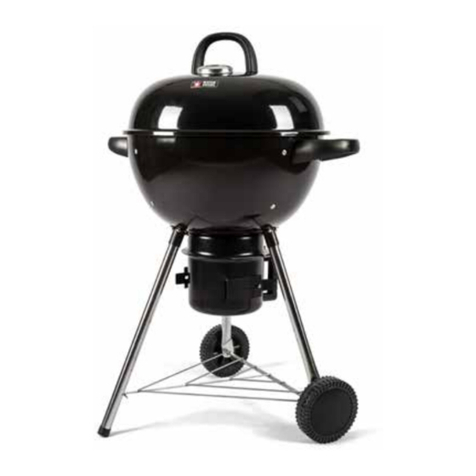
8
Capitolo 7. Manutenzione ordinaria
7.3. Rimozione di sfridi di film plastico e vari
Prima di rimuovere eventuali residui di film depositati sulle parti calde della macchina (esempio sulla paletta apri
polmone calore), attendere che la macchina si sia adeguatamente raffreddata.
Nel caso di dover provvedere alla pulizia della campana inferiore rimuovere il piatto retinato (11) ed asportare i pezzi
caduti all’interno (figura 7.3.A pag.69).
Quando la bobina dell’avvolgitore automatico (29) è piena, rimuovere il film svitando la manopola (30) e togliendo il disco
(31) (figura 7.3.B pag.69) (dove previsto).
7.4. Pulizia della macchina
!Per la pulizia della macchina utilizzare un panno inumidito con acqua (figura 7.4. pag.70).
!Per la pulizia della campana superiore (19) si consiglia di pulire sia l’esterno che l’interno con un normale detergente
per la pulizia dei vetri.
Non utilizzare detergenti con solventi che potrebbero danneggiare la campana superiore (19) e
ridurne la trasparenza.
!Se la macchina lavora in ambiente polveroso é necessario pulire con maggiore frequenza sia l’esterno che l’interno
della stessa. Si consiglia soprattutto di aspirare la polvere che si deposita sui componenti elettrici interni.
7.5. Cambio teflon e gomma
Quando i riscontri in teflon (17) sono troppo usurati, sostituirli con quelli di ricambio facendo molta attenzione alla loro
applicazione, lineare e piana (figura 7.5. pag.70). Pulire con detergente la gomma (18) prima dell’applicazione del nastro
di teflon autoadesivo. Se anche la gomma (18) risulta deteriorata provvedere alla sua sostituzione nel modo seguente:
1. togliere la gomma vecchia
2. pulire la sede che la contiene
3. mettere alcune gocce di colla nella sede stessa
4. inserire la nuova gomma in modo lineare
5. pulire la gomma con detergente
6. applicare il nastro di teflon autoadesivo
7.6. Cambio lama saldante
Per sostituire la lama saldante (13) seguire questa procedura (figura 7.6. pag.70):
1. Togliere tensione alla macchina
2. Svitare le 2 viti (32) e togliere il coperchio (20)
3. Svitare la vite (21) che blocca la lama saldante nel pistoncino (22)
4. Togliere il morsetto (23) fino a sfilare la lama saldante dal pistoncino (22)
5. Ripetere le operazioni descritte ai punti 2-3-4, anche per il pistoncino posteriore
6. Svitare la vite (25)
7. Togliere la lama saldante vecchia
8. Pulire la sede e se necessario sostituire il teflon isolante (24) del morsetto centrale
9. Inserire la lama saldante nuova partendo dal morsetto centrale e stringere la vite (25)
10. Rifilare la lama saldante nuova a filo del foro dei pistoncini (22)
11. Completare l’inserimento della lama saldante in tutta la sede
12. Spingere a fondo il pistoncino anteriore (22) verso la lama saldante in modo che questa entri nel foro dello stesso e
stringere la vite (21)
13. Ripetere le operazioni descritta al punto 12, anche per il pistoncino posteriore
14. Rifilare il teflon sporgente dal morsetto centrale
15. Assicurarsi che la lama saldante sia posizionata bene ed in tensione
7.7. Schema elettrico
(figura 7.7. pag.71).
B1 Finecorsa start ciclo K1 Modulo di potenza
B2 Finecorsa avvolgitore M1 Motore ventola
BT1 Termocoppia M2 Motore avvolgitore
E1 Ventilatore raffreddamento Q1 Interruttore generale
ER1 Resistenza lama saldante Q2 Interruttore avvolgitore
ER2/3 Resistori SK1 Scheda di comando
FU1/2 Fusibile linea 10.3X38 T1 Trasformatore di taglio
FU3 Fusibile alimentatore scheda 5X20 U1 Magnete di retrazione
FU4/5 Fusibile ventola 5X20 U2 Magnete di saldatura
FU6/7 Fusibile ventilatore, pompa raffreddamento, avvolgitore 5X20 X1 Presa alimentazione avvolgitore
FU8 Fusibile magneti 5X20 X2 Spina alimentazione avvolgitore
G1 Pompa di raffreddamento
